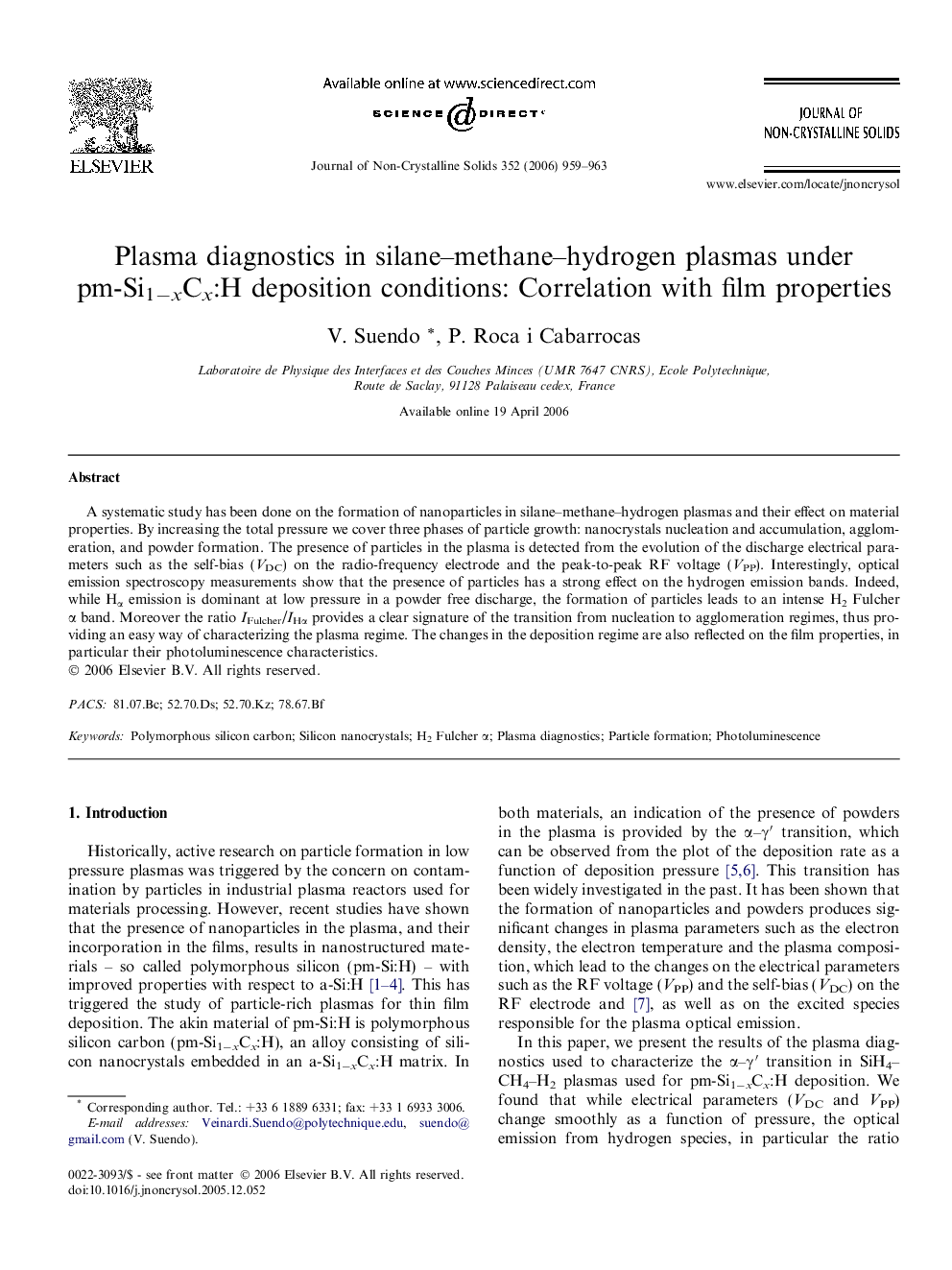| Article ID | Journal | Published Year | Pages | File Type |
|---|---|---|---|---|
| 1486319 | Journal of Non-Crystalline Solids | 2006 | 5 Pages |
Abstract
A systematic study has been done on the formation of nanoparticles in silane-methane-hydrogen plasmas and their effect on material properties. By increasing the total pressure we cover three phases of particle growth: nanocrystals nucleation and accumulation, agglomeration, and powder formation. The presence of particles in the plasma is detected from the evolution of the discharge electrical parameters such as the self-bias (VDC) on the radio-frequency electrode and the peak-to-peak RF voltage (VPP). Interestingly, optical emission spectroscopy measurements show that the presence of particles has a strong effect on the hydrogen emission bands. Indeed, while Hα emission is dominant at low pressure in a powder free discharge, the formation of particles leads to an intense H2 Fulcher α band. Moreover the ratio IFulcher/IHα provides a clear signature of the transition from nucleation to agglomeration regimes, thus providing an easy way of characterizing the plasma regime. The changes in the deposition regime are also reflected on the film properties, in particular their photoluminescence characteristics.
Keywords
Related Topics
Physical Sciences and Engineering
Materials Science
Ceramics and Composites
Authors
V. Suendo, P. Roca i Cabarrocas,
